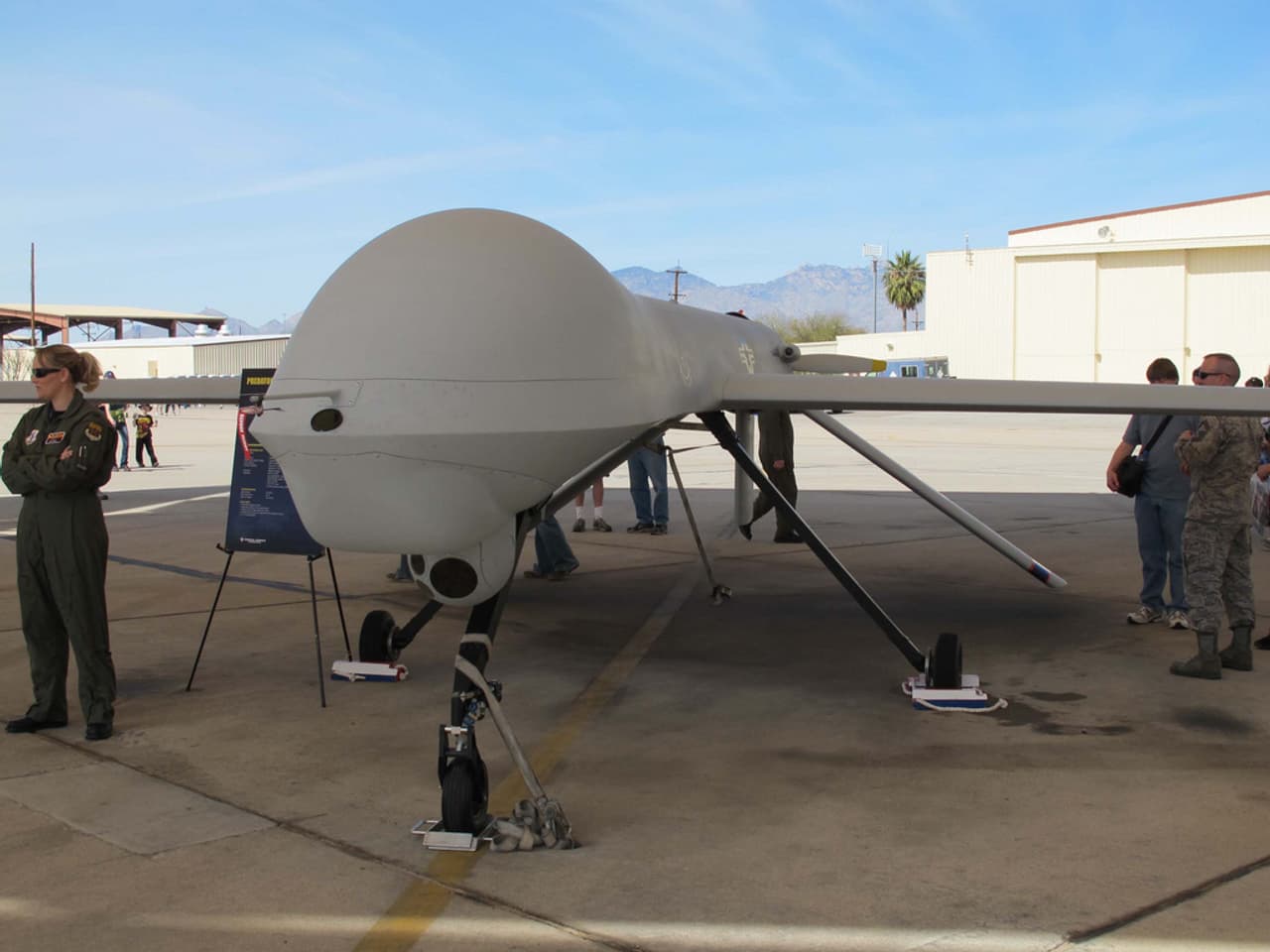
History of drone warfare
Drones have been part of warfare since the 19th century, arguably, when the Austrians used pilotless hot-air balloons to bomb Venice.
Development of pilotless flying machines such as those operated today began almost as soon as the Wright brothers demonstrated powered flight with the first remote control planes developed during the First World War.
Unmanned technology advanced in the interwar period. The term drone itself started to be used at this time, after the UK developed the Queen Bee, a bi-plane converted to be controlled by radio from the ground.
Like many military drones at that time, the Queen Bee was a remote controlled target for anti-aircraft gunners to use for target practice. Others, including the infamous Nazi V1 “Doodlebug,” were still essentially guided bombs - primitive versions of today’s cruise missiles.
By the late 1950s however the US and others found they could use unmanned, remotely piloted aircraft as spy planes. Radio-controlled and fitted with film cameras, the small drones flew over China and North Vietnam gathering imagery intelligence but not risking the lives of pilots, or the diplomatic fallout of US airmen being captured by Communists.
Drones were still only a niche technology during the Cold War. They were unreliable, small yet expensive, and pilots had to be within range of their analogue radio signals, often having to fly their drones while sat in a nearby manned aircraft.
They were overshadowed by globe spanning satellite networks and much sexier, supersonic manned spy planes, such as the U-2 and SR-71 Blackbird, which were much more in tune with the white scarf bravado of Air Force pilots.
The genesis of the drones orbiting today’s battlefields came in three key technological leaps.
First came the work of an Israeli aviation genius who in the 1970s started to develop aircraft with glider-like properties. Incredibly long, thin wings that could hold the plane aloft at altitude for hours on end, more than 24 hours flight.
This endurance is a fundamental reason why today’s armed drones, such as the General Atomics Reaper drone, are so in vogue. The key is keeping the pilots on the ground: the drones are lighter than manned aircraft and they don’t have to land when they get tired, they just swap seats with a fresh crew.
Their ability to loiter proved invaluable in the 1990s, during the escalating conflict in the former Yugoslavia. There was a dearth of good intelligence about Serbian tank and troop movements. US supersonic jets were struggling to spot the Serbian forces in the thick Balkan forests but the drones could stay on station for 24 hours at a time, kept their unblinking eye on their targets.
Combining this loitering with the second crucial advance, the use of transmitters to send the footage straight back to battlefield commanders, is credited with convincing Nato generals they needed to start bombing the Serbs again, so hastening the signing Dayton peace accords.
The US has since taken those Balkan systems further. The signal to control them, and the returning video footage, are now transmitted through satellite networks, not radio waves. In 2000 the US took the final leap forward when the Air Force and CIA became the first to successfully fit drones with missiles, as part of a failed CIA attempt to kill Osama bin Laden.
These satellite controlled hunter-killer drones allow pilots to control their aircraft from half a world away and it allows generals, spies and politicians to watch the war they are waging on the other side of the world, live on TV from anywhere in the world.
America’s drones started life as spy planes and were augmented to become assassination weapons. And they have been used in at least seven countries to fulfill exactly those roles, throughout Washington’s 15 year, ongoing war on terror. They have been hoovering up information, feeding the military’s insatiable demand for battlefield intelligence, and finding and killing terrorists and insurgents.
The US drone war massively expanded under President Barack Obama. Responding to evolving militant threats and the greater availability of remote piloting technology, Obama ordered ten times more counter-terror strikes than his predecessor George W Bush over the course of his term.
It is not just that Obama has put more of a certain type of aircraft in the skies. The low-footprint nature of drone strikes – which can be carried out without having personnel in the country being hit – made it politically easier for the US to mount operations in countries with which it was not technically at war. Hundreds of strikes have been carried out in Yemen, Pakistan and Somalia, carried out by the highly secretive Central Intelligence Agency and Joint Special Operations Command at the Pentagon.
Advocates say the drone programme has saved American lives and reduced the need for messy ground operations like the 2003 invasion of Iraq. But it has also killed hundreds, if not thousands of civilians, according to data collected by the Bureau and the NGO Airwars - a reality which experts have warned could have a radicalising effect on the very societies US drones are trying to eliminate extremists from. Human rights organisations have lambasted the targeted killing programme for its “clear violations of international humanitarian law.”


